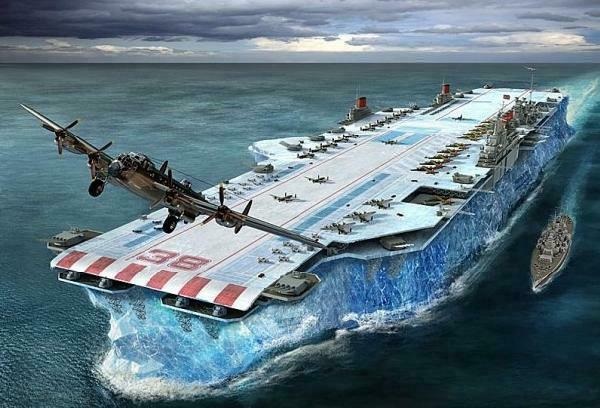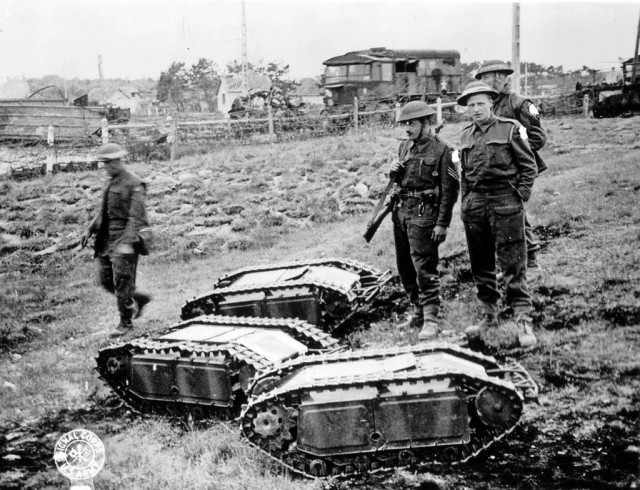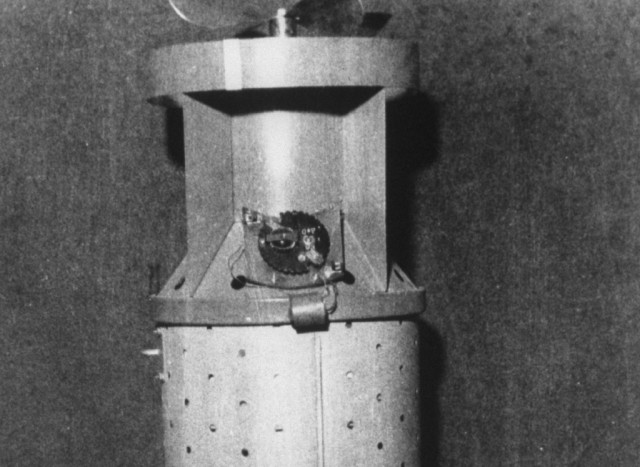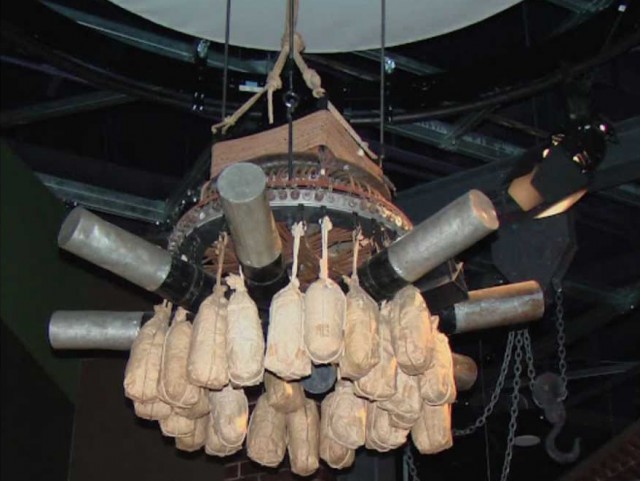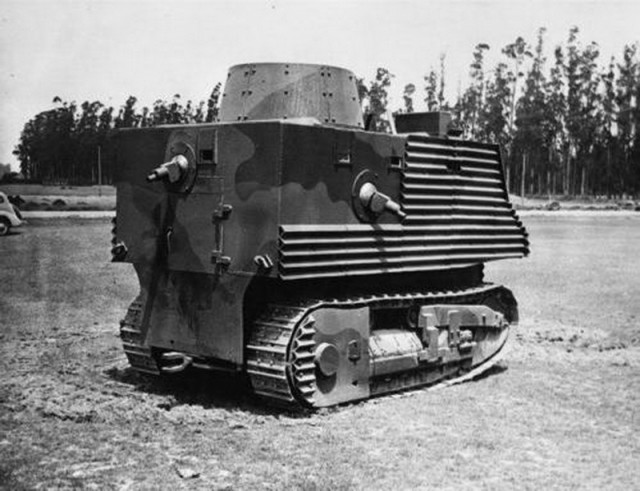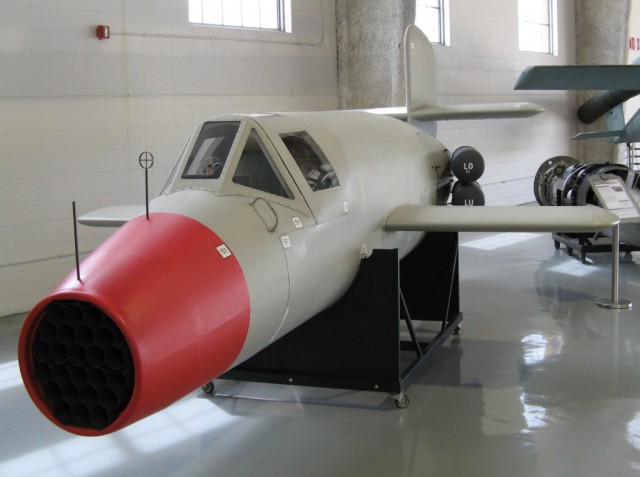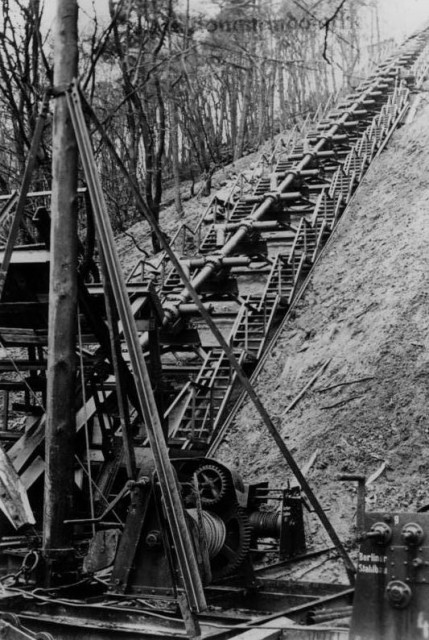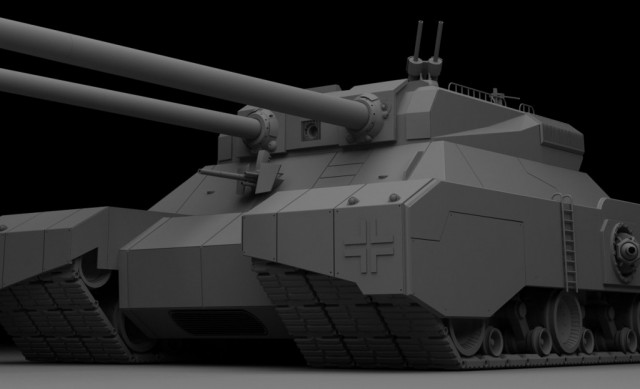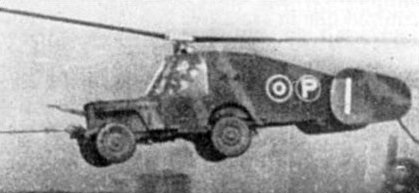With the advent of new technologies during the Second World War, there was an increase in requirement of new war ammunitions and machines. There were some brilliant and some really bizarre war machines that were built during that time that so far has been able to elude the public. In this article we discuss some of the brilliantly bizarre weapons.
The first on our list is the “Ice Aircraft Carriers ‘Bergships’”. Geoffrey Pyke, British technologist, as a part of the Project Habakkuk wanted to build aircraft carrier made of wood pulp and ice. These were to work as landing platform for aircrafts in the Atlantic. A small prototype was constructed in lake Patricia, Alberta but in December 1943 it was concluded that, “The large Habbakuk II made of pykrete has been found to be impractical because of the enormous production resources required and technical difficulties involved”
“Beetle Tanks”, as they were called were used by the Germans in World War II. These tanks were remote control operated and could carry 60-100 kg of explosives. These tanks were used to demolish tanks, bridges and disrupt the infantry. A total of 7564 of such Beetle Tanks were produced but they were not considered success due to their high unit cost, low speed and a thin armour that made these prone to any anti tank gun.
In Pennsylvania, US, a dentist named Lytle S. Adams created “Bat Bombs”.In this he attached a bomb to scores of Mexican Free-tailed bats. And these bats were released at from a bomber at dawn. The thinking was that the bats will roost on the buildings and those will be demolished once the bombs detonate. However, this program was cancelled as this weapon might not be ready until mid 1945.
Fourth on our list are the “Fire Balloon Bombs”. Japanese created these hydrogen balloons with bombs attached to them. The concept was to make use to the jet stream over the pacific and drop the bombs in American and Canadian cities.
“The Bob Semple Tank” was built in New Zealand from corrugated iron on a tractor. This was designed by New Zealand minister of works Bob Semple. This tank was built without a formal plan and had numerous flaws and was never put to mass production. The tanks were converted back to tractors after public ridicule.
The Bachem Ba 349 Natter was a rocket powered interceptor version of Surface to Air missile designed by Erich Bachem. Launched vertically and mostly controlled remotely, this would jettison its rockets at the enemy aircraft. The pilot and the fuselage containing the motor would land using a separate parachute. However, this never went into mass production with the death of the test pilot in 1945, the Heritage Daily reports.
V-3 Cannon was designed as a German supergun. The gun used many propellants along the barrel to fire as soon as the projectile passed them. They wanted to use it to bombard London from bunkers in Northern France. But the Northern France sites were put out of commission when RAF bombed the tow sites.
German designed Friedrich Krupp AG designed the Landkreuzer P. 1000 Ratte Super Tank. At 1000 metric tons, it was to be armed with naval artillery and 10 inch of hardened steel. Production began in the year 1942 but then it was cancelled by Albert Speer.
“Hafner Rotabuggy”, was another bizarre aircraft designed by the British. It was designed by Raoul Hafner of the Airborne Forces Experimental Establishment and built by R. Malcolm Ltd at White Waltham in 1942. It was an army jeep combined with a rotor kite like those found on a gyrokite. It was also known as ‘Blitzbuggy’ or ‘Rotabuggy’. But with the invention of gliders that could carry vehicles Rotabuggy was made obsolete.
The Japanese bombed the Chinese using ‘Flea Bombs’. They bombed the Chinese with fleas that carried bubonic plague. This military aerial spraying killed thousands of Chinese of the bubonic plague.
